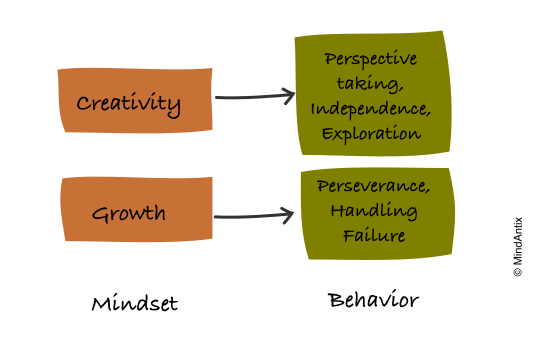As a graduate student, Carol Dweck was deeply influenced by Martin Seligman’s work on understanding depression. In experiments conducted in the 1960s, Seligman found that when animals are given a painful stimuli without the ability to control the situation, they become passive – a condition he called learned helplessness. This sparked Carol Dweck’s interest in human, and more specifically, student motivation.
She noticed that not all people show learned helplessness when faced with adversity and asked, “Why do some students give up when they encounter difficulty, whereas others who are no more skilled continue to strive and learn? One answer, I soon discovered, lay in people’s beliefs about why they had failed.”
Her work with students over the next several decades led to the theory of Growth Mindset, which is now transforming educational outcomes. She found that students who believed that their abilities can improve with effort (growth mindset), outperformed those who believed that their intelligence is fixed (fixed mindset). This effect held for different subjects areas including math and science.
Growth mindset is especially important in creative work since such work often requires higher levels of perseverance. As she points out, “In a poll of 143 creativity researchers, there was wide agreement about the number one ingredient in creative achievement. And it was exactly the kind of perseverance and resilience produced by growth mindset.”
But there is also growth mindset about creativity, or in other words, the belief that creativity is not innate and can be developed just like any other skill. Research studies have found that when it comes to Creativity – people can hold both a fixed and growth mindset at the same time. They view great creative accomplishments, or Big-C creativity, as a fixed trait and believe that smaller levels of creativity, or little-c creativity, is malleable. In other words, people believe that Einstein was successful because he was exceptionally gifted but their own (limited) creative potential can be improved by putting in effort.
In an approach similar to the growth mindset, we teach children in our programs how their brain works as an associative engine and how that can help in coming up with creative ideas. In other words, everyone is capable of becoming more creative with some effort.
Apart from growth mindset, Creativity is also influenced by other beliefs and attitudes that help in different aspects of creative problem solving (collectively referred here as the Creativity Mindset). Some of these attitudes, and how we try to encourage them, are highlighted below.
Openness
Openness to Experience, which includes six dimensions, has been found to be the strongest and most consistent trait to predict creative achievement. One dimension, intellectual curiosity, has been found to be the best predictor of scientific creativity. Openness leads to the ability to seek diverse information and reconcile multiple perspectives which then often results in unique solutions. We encourage openness by building a collaborative environment where students take each others feedback and perspectives in improving their own solution.
Non-conformity
Having a non-conforming attitude means having the confidence to pursue ideas outside the mainstream norms. It helps people find uniqueness in their ideas, an essential component of creativity. One activity we use in building a non-conformist attitude is challenging commonly-held assumptions. We play games where students pick an assumption, reverse it, and find ways and situations in which the reversed assumption would be useful.
Playfulness
Being playful means taking things lightly and having an exploratory approach. A playful attitude enables flexible thinking and has been found to correlate with creativity. To build playfulness, we often use improv games as warm-up exercises. The cognitive processes that underlie improv are the same as those used in creative thinking. A research study found that improv comedians produce 25% more creative ideas than professional product designers.
In the end, both the growth mindset and the creativity mindset result in behaviors that are essential for high creative accomplishments. By fostering these mindsets in children and teaching them creative thinking skills, we can give them the tools to unlock their full potential.


2 Replies to “Growth and Creativity Mindsets”
Comments are closed.